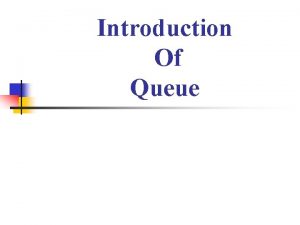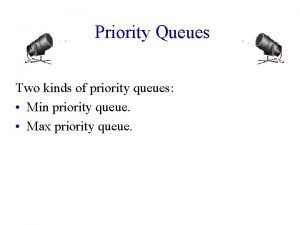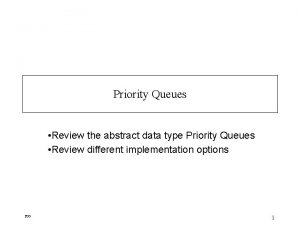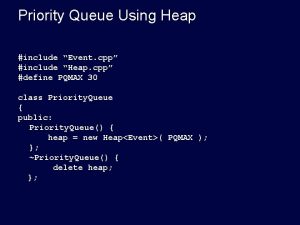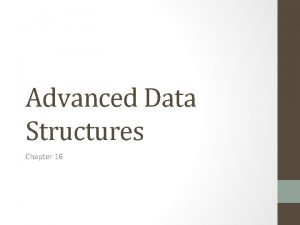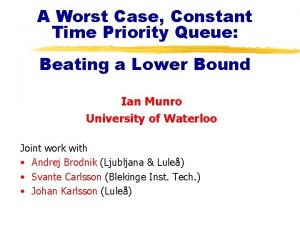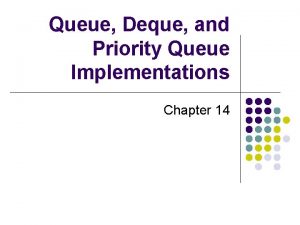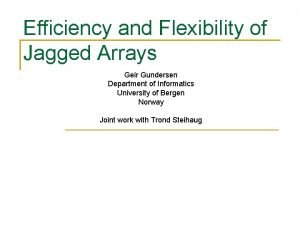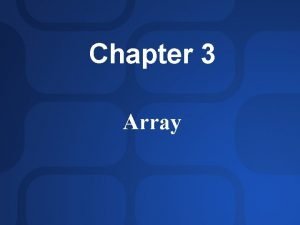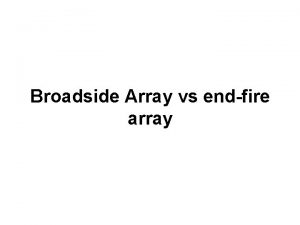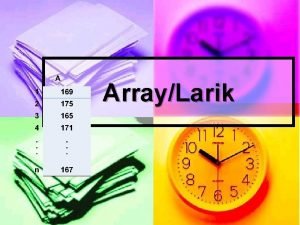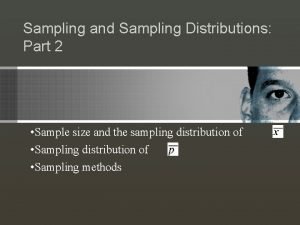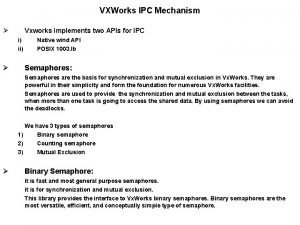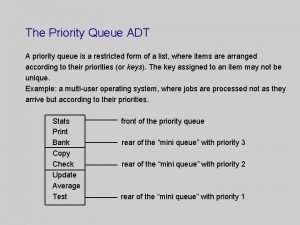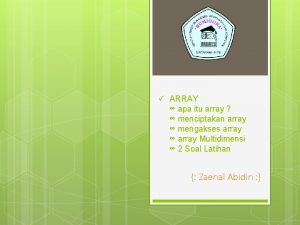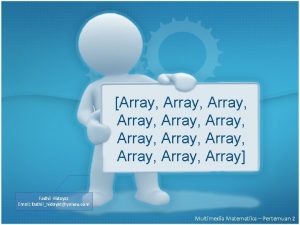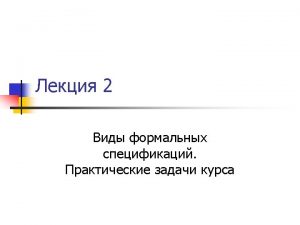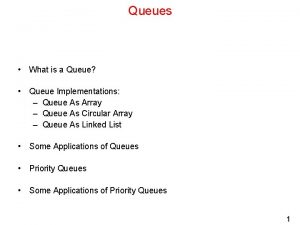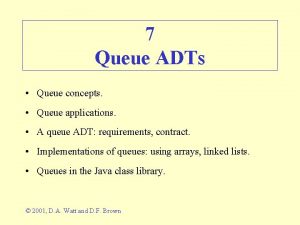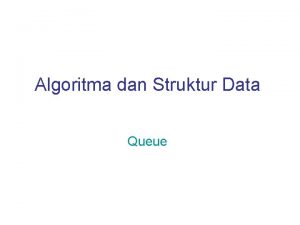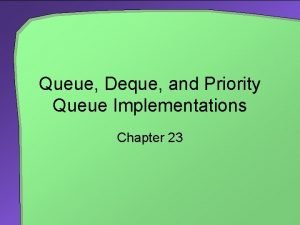Lecture Priority Queue Quiz Sample Is array a












































- Slides: 44

Lecture: Priority Queue

Quiz Sample • Is array a data structure? • What is a data structure? No! Why? It is a data organization associated with a set of operations • What data structures are implemented by array? Stack, Queue, List, Heap, Max-heap, Min-heap, … • Priority queue (max --, min --).

Quiz Sample • Is Dial algorithm with running time O(m+nc) a polynomial-time algorithm, where c is the maximum arc length?

Quiz Sample • Is Dial algorithm with running time O(m+nc) a polynomial-time algorithm, where c is the maximum arc length? • Answer: No

Implementations • With min-priority queue, Dijkstra algorithm can be implemented in time • With Fibonacci heap, Dijkstra algorithm can be implemented in time • With Radix heap, Dijkstra algorithm can be implemented in time

Contents • Recall: Heap, a data structure Min-heap (a) Min-Heapify procedure (b) Building a min-heap • Min-Priority Queue • Implementation of Dijkstra’s Algorithm

Heap

A Data Structure Heap • A heap is an array object that can be viewed as a nearly complete binary tree. 1 6 2 3 5 3 4 2 5 4 6 5 3 2 4 1 6 1 All levels except last level are complete. Tied with three procedures for finding Parent, finding left child, and finding Right child.


Min-Heap

Min-Heap

Min-Heapify • Min-Heapify(A, i) is a subroutine. • Input: When it is called, two subtrees rooted at Left(i) and Right(i) are minheaps, but A[i] may not satisfy the minheap property. • Output: Min-Heapify(A, i) makes the subtree rooted at A[i] become a min-heap by letting A[i] “float down”.

4 14 4 12 14 7 8 11 12 4 8 2 7 14 1 7 8 11

Building a Min-Heap e. g. , 4, 1, 3, 2, 16, 9, 10, 14, 8, 7.

4 1 2 14 3 16 8 7 9 10

4 1 2 14 3 7 8 16 9 10

4 1 2 14 3 7 8 16 9 10

4 1 2 14 3 7 8 16 9 10

4 1 2 14 3 7 8 16 9 10

1 4 2 14 3 7 8 16 9 10

1 2 4 14 3 7 8 16 9 10

Priority Queue

Priority Queue • A priority queue is a data structure for maintaining a set of elements, each with an associated value, called a key. • A min-priority queue supports the following operations: Minimum(S), Extract-Min(S), Increase-Key(S, x, k), Insert(S, x). • Min-Heap can be used for implementing min-priority queue.



Input: 4, 1, 3, 2, 16, 9, 10, 14, 8, 7. Build a min-heap 1 2 4 14 3 7 8 9 10 16 1, 2, 3, 4, 7, 9, 10, 14, 8, 16.

16 2 4 14 3 7 9 10 8 16, 2, 3, 4, 7, 9, 10, 14, 8.

2 16 4 14 3 7 9 10 8 2, 16, 3, 4, 7, 9, 10, 14, 8.

2 4 7 16 14 3 9 10 8 2, 4, 3, 16, 7, 9, 10, 14, 8.

2 4 8 14 3 7 9 10 16 2, 4, 3, 8, 7, 9, 10, 14, 16.

Element = address i

1 2 4 14 3 7 8 9 10 16 1, 2, 3, 4, 7, 9, 10, 14, 8, 16.

1 2 4 14 3 7 1 9 10 16 1, 2, 3, 4, 7, 9, 10, 14, 1, 16.

1 2 1 14 3 7 4 9 10 16 1, 2, 3, 1, 7, 9, 10, 14, 4, 16.

1 1 2 14 3 7 4 9 10 16 1, 1, 3, 2, 7, 9, 10, 14, 4, 16.


1 3 4 14 6 7 8 9 10 16 1, 3, 6, 4, 7, 9, 10, 14, 8, 16.

1 3 4 14 6 9 7 8 16 10 +∞ 1, 3, 6, 4, 7, 9, 10, 14, 8, 16, +∞.

1 3 4 14 6 9 7 8 16 10 2 1, 3, 6, 4, 7, 9, 10, 14, 8, 16, 2.

1 2 4 14 6 9 3 8 16 10 7 1, 2, 6, 4, 3, 9, 10, 14, 8, 16, 7.

Implementation of Dijkstra’s Algorithm

Dijkstra’s Algorithm

Implementations • With min-priority queue, Dijkstra algorithm can be implemented in time • With Fibonacci heap, Dijkstra algorithm can be implemented in time • With Radix heap, Dijkstra algorithm can be implemented in time

 Difference between simple queue and circular queue
Difference between simple queue and circular queue Min-priority queue
Min-priority queue Priority queue abstract data type
Priority queue abstract data type Insert element in priority queue
Insert element in priority queue Priority queue using heap
Priority queue using heap Double ended priority queue
Double ended priority queue Priority queue linked list python
Priority queue linked list python Praveen
Praveen Priority queue order
Priority queue order Adaptable priority queue java
Adaptable priority queue java Adaptable priority queues
Adaptable priority queues Priority queue lower bound
Priority queue lower bound Deque and priority queue
Deque and priority queue Transform and conquer algorithm
Transform and conquer algorithm Operasi pada queue
Operasi pada queue The queue summary
The queue summary Priority queue animation
Priority queue animation Burman's priority list gives priority to
Burman's priority list gives priority to Priority mail vs priority mail express
Priority mail vs priority mail express Queue struktur data
Queue struktur data 01:640:244 lecture notes - lecture 15: plat, idah, farad
01:640:244 lecture notes - lecture 15: plat, idah, farad Priority improvement areas template
Priority improvement areas template Priority queues: quiz
Priority queues: quiz Pin grid array vs land grid array
Pin grid array vs land grid array Tugascout
Tugascout Jagged array
Jagged array Associative array vs indexed array
Associative array vs indexed array Broadside array and endfire array difference
Broadside array and endfire array difference Apa itu larik
Apa itu larik Sparse array adalah array yang
Sparse array adalah array yang Contoh array 2 dimensi python
Contoh array 2 dimensi python Photovoltaic array maximum power point tracking array
Photovoltaic array maximum power point tracking array Lecture announcement sample
Lecture announcement sample Representative population
Representative population Sampling techniques in qualitative research
Sampling techniques in qualitative research Volunteer sample vs convenience sample
Volunteer sample vs convenience sample Convenience sampling
Convenience sampling Stratified sample vs cluster sample
Stratified sample vs cluster sample Tabel taraf signifikansi
Tabel taraf signifikansi Clinical judgement measurement model
Clinical judgement measurement model Every quiz has been easy. therefore the quiz will be easy
Every quiz has been easy. therefore the quiz will be easy Deductive vs inductive geometry
Deductive vs inductive geometry Vxworks message queue
Vxworks message queue Jika noel(create(q)) adalah 0 maka front(create(q)) adalah
Jika noel(create(q)) adalah 0 maka front(create(q)) adalah Contoh program queue python
Contoh program queue python
